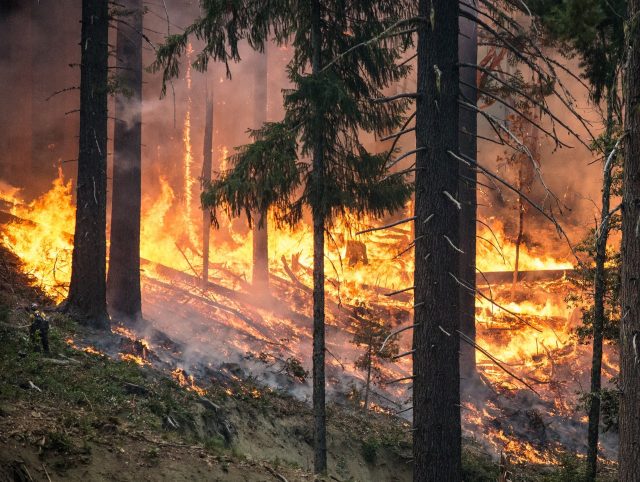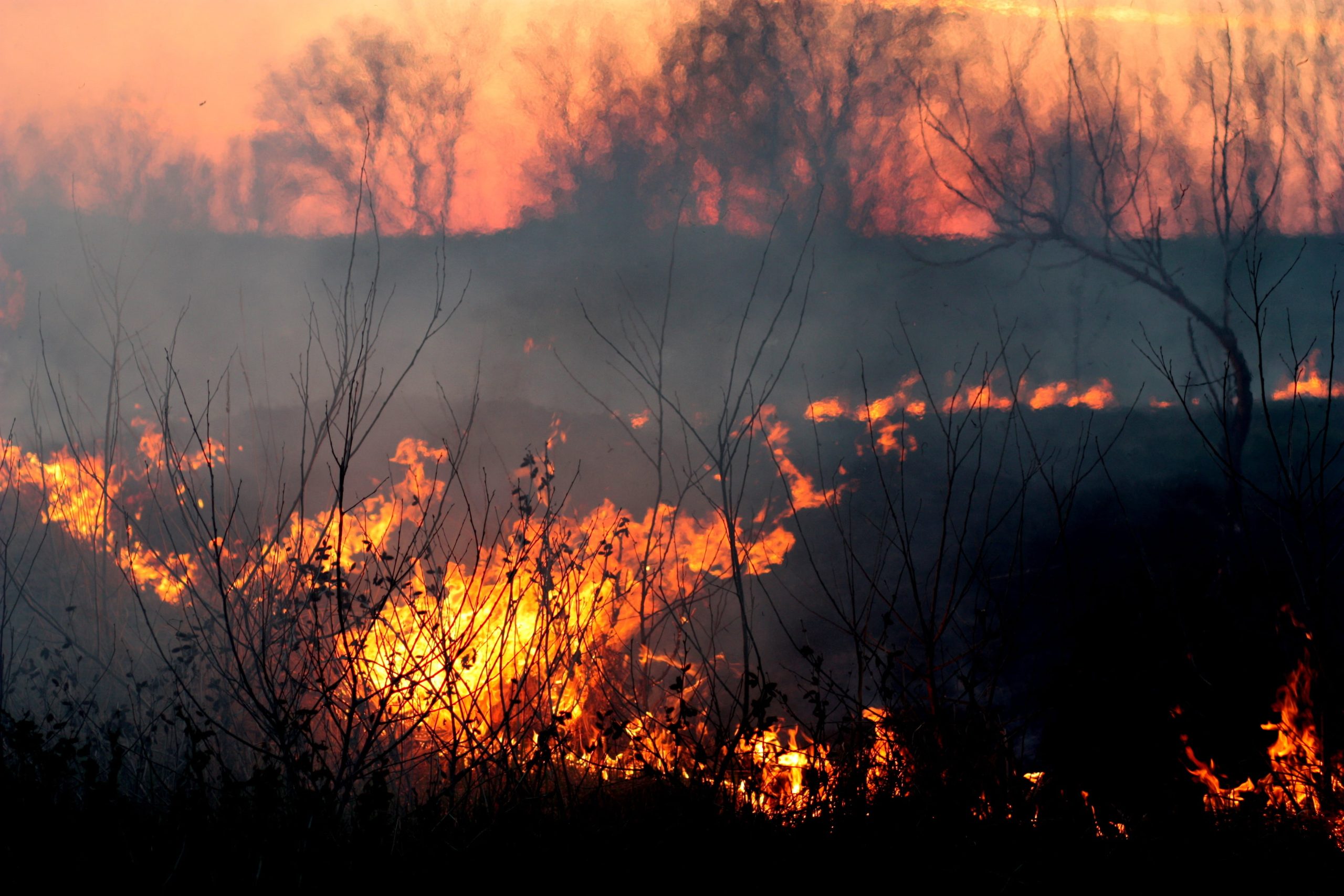
In addition to the loss of life and financial costs of the war between Russia and Ukraine, we should also mention the effects that the war equipment (tanks, planes, armoured vehicles) and the constant bombing in different areas of the conflict have on the environment. These actions lead, beyond the immediate local effects on the ecosystem in the “hot” areas of the war and their immediate vicinity, to pollution of surface waters and uncontrolled increases in long-term carbon emissions. Environmentalists might say that this unnecessary conflict is currently generating astronomical amounts of greenhouse carbon emissions and the question is how environmentally costly is this conflict?
Under the Green Deal programme, Europe aims to become the first ‘green’, i.e. carbon-neutral, continent by 2050. The legitimate question is whether, with no end in sight, the European Commission’s climate neutrality target can be achieved on the old continent.
In addition to the question of how much a war costs, it is also worth asking how much (what) it costs us?
In the first year of the conflict alone, the cost of the environmental damage caused on the territory of Ukraine amounted to no less than 51 billion dollars. If we take into account that in the second year of the conflict the intensity of Russia’s bombing of various parts of Ukraine intensified, we can say without hesitation that in the two years of the war the negative effects on the environment easily exceeded EUR 100 billion.
These data were provided by the National Bank of Ukraine (EkoZagroza), and the distribution of damages caused by the Russian-Ukrainian conflict is as follows: $27 billion in air pollution, $23.1 billion in waste, $1.6 billion in contaminated water sources and $0.3 billion in soil pollution. Given that Ukraine is a state whose agricultural production is vital to the economies of many states, we can expect that a colossal amount of money will be needed to decontaminate the soil. In terms of carbon footprint, in the first year of the war, according to a study by Lennard de Klerk, an expert in carbon accounting, total carbon emissions would amount to 155 million metric tons and about 300 in the two years of the conflict.
The values monitored in Lennard de Klerk’s study are comparable to the annual carbon emissions of the EU member state the Netherlands, but before the war, Ukraine’s carbon emissions amounted to 220 million metric tons. The decrease in these emissions could be related to the fact that the country’s industrial activity during this period was substantially reduced or even stopped almost entirely. On the other hand, carbon emissions have also decreased as a result of the fact that about 18% of Ukraine’s population has emigrated to other countries, the main destination being countries in the European Union. From this point of view we can say that part of Ukraine’s carbon emissions have been transferred to other countries.

Following a war, as well as a natural disaster, most of the resources, and therefore most of the carbon emissions, are used to rebuild destroyed homes and infrastructure. The percentage of carbon emissions for the reconstruction of civilian infrastructure amounts to 50%. Surprisingly, less than 10% of the total carbon emissions (this percentage includes fuel for planes and tanks as well as all the shells and bombs detonated) were generated by the actual war gear, according to a report by Climate Focus. According to the same report, almost a quarter of all carbon emissions were due to forest fires. A significant proportion of pollution is also attributed to methane leaks from the Nord Stream pipeline (15%), the culprits of which have still not been identified. There is, however, an environmental silver lining to all this tragedy.
15% of total carbon emissions in the first year of the war were due to Nord Stream sabotage
For those unfamiliar, “Nord Stream” was an energy infrastructure project consisting of two underwater natural gas pipelines crossing the Baltic Sea, directly connecting Russia with Germany. The project aimed to deliver Russian natural gas directly to Europe, avoiding transit (and thus the associated fees) through intermediate countries. Nord Stream 1 was completed and started supplying natural gas in 2011 with a capacity of around 55 billion cubic metres of gas per year. Nord Stream 2 was designed to add another 55 billion cubic metres, doubling total capacity. The Nord Stream project has been the subject of debate and controversy, both politically and energetically. Some argue that it provides a secure and efficient source of natural gas for Europe, while others fear it could reinforce Europe’s dependence on Russian gas and have geopolitical consequences. There are diverging views among EU Member States on this project. Some countries, such as Germany, believe Nord Stream would contribute to energy security, while others, including some Eastern European countries, believe it would undermine energy solidarity within the EU. Nord Stream 2 has been the subject of sanctions and criticism from countries and organisations opposed to the project. The United States and other countries have raised concerns about Europe’s increased dependence on Russian gas and have imposed sanctions against the project in 2020 and 2021.
Due to Russia stopping gas supplies to most European countries, and the exaggerated increase in energy prices (in some countries by as much as 700%), it has been necessary to reconfigure the plan for securing energy sources. Although initially some were concerned about the need to reopen coal mines and their high pollution levels, overall, carbon emissions in most European countries have fallen during this period. This has been made possible primarily by lower energy consumption due to reduced energy waste, but also by the implementation of projects that have provided greener energy sources.
How much air does one hectare of forest purify?
There is no exact figure for how much air a hectare of forest can purify, as this depends on several factors. Among the factors that influence the amount of air purified by vegetation are: forest type, tree species, climate and other local factors. However, in general, forests are known for their ability to absorb carbon dioxide and release oxygen during photosynthesis. An average tree produces about 20 kilograms of oxygen per year. Therefore, a forest with a higher density of trees per hectare could contribute significantly to oxygen production. In addition, forests play an important role in carbon sequestration, helping to reduce carbon dioxide concentrations in the atmosphere. It is important to note that specific impacts may vary and continued research is needed to better understand these processes and to develop effective strategies for forest conservation and regeneration.
Do we want Ukraine in a green Europe?
Surely after the end of the war Ukraine will try to achieve all the necessary goals of EU membership. One of the problems will certainly be meeting the standards and pollution indexes that comply with the Green Deal Pact that most EU countries adhere to with the utmost sanctity. Determining the major polluters in Ukraine can involve a variety of sources and industrial sectors. Among the main sources of pollution in Ukraine we could list: metallurgical industry, energy industry, agriculture, waste management, transport.
It is very clear that Ukraine has a developed metallurgical industry, especially in regions such as Donbas. Steel and metal production contribute significantly to greenhouse gas emissions and air pollution, and Ukraine’s energy industry is also highly dependent on fossil energy resources such as coal and natural gas. Coal-fired power plants emit significant amounts of greenhouse gases. Another problem for meeting the accession indicators is the excessive use of fertilisers and pesticides in Ukrainian agriculture which can lead to soil and water pollution. Waste management issues will be a hotly debated topic in Ukraine’s accession to the EU. Uncontrolled landfills and improper management of industrial waste are also polluting factors so we should not forget the fines paid by some Member States for failure to comply with environmental conditions and failure to close non-compliant waste landfills on time.
Ukraine currently has candidate country status. Ukraine applied for EU membership on the 28th of February 2022 and on the 23rd of June 2022 the European Council granted it candidate status.



 Subscribe
Subscribe